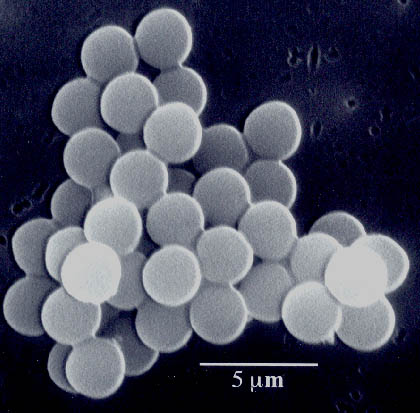
This graphic was brought to my attention during our most recent cath conference regarding door-to-balloon (DTB) times. It demonstrates that if we could somehow shave a few minutes off of time to opening a coronary artery, we'd save lives. It all looks so perfect.
But if we look closely at this graph, we are struck by the right-hand scale of relative risk reduction and the remarkable linearity of the graph and wonder, is anything that linear in medicine? The graph is a compilation of retrospectively acquired, self-reported, chart-review data of "door-to-balloon times" taken from medical records of patients undergoing emergent angioplasty during the throws of an acute heart attack. It appeared in the
New England Journal of Medicine on the 18th October, 2007, in a “
review” article regarding the benefits of reducing time to coronary revascularization. Now I think the data are pretty clear that "time is heart muscle" when it comes to coronary revascularization. Just like
time is brain, too. And certainly, there is nothing wrong with raising awareness regarding this relationship. But could we be spending an enormous amount of our limited medical resources creating such a relatively small reduction of relative risk (from 1.7 to 1.2) in the name of self-promotion of our medical centers and to assure Medicare reimbursement? Might our precious health care resources be better spent tackling more pressing issues to cardiovascular health like the obesity epidemic? And how do we reconcile that
others from the Netherlands have failed to find a relationship between door-to-balloon time and mortality when the issue was studied in the clinical setting? (In their study using multivariate analysis, only a
symptom-onset-to-balloon time
over 4 hours was identified as an independent predictor of one-year mortality.)
Unfortunately, I already see the first vestiges of manipulation of the data by medical centers (sanctioned, of course, by regulators) because of the challenges of applying this measure in the real clinical world. But there is such a high expectation to massage this data to improve referrals as hospitals as they are
compared online to other medical centers that it has become a National Medical Priority. The addition of Medicare reimbursements being tied to this "performance measure" makes things even more pressing for medical centers. But the truth be told, there remains a remarkable amount of subjectivity by centers deciding who should be included in the DTB calculation. For instance, "He had multi-vessel disease? Good, we can exclude him!" or "Oh, and what was that? Another patient hit the door at the same time? That’s OK, the lab was full, we can exclude this guy, too!"
The exclusion list goes on and on.
It seems few care about the costs inherent to such an oversight system at a time when millions of patients are left reeling from high health care costs. A team of individuals are required to compile the data, review the charts, and produce the reports regarding door-to-balloon times. Lots and lots of people. And lets not forget the legions of auditors sent throughout the land in the interest of assuring conformity. They even have “how-to”
articles that look anything but simple to me. So the monitoring has now become a fact of life for hospitals. And so we are spending a remarkable amount for relative statitistical minutia.
I have already
commented from the staff and patient's perspective on this issue. Others have noted other potential
pitfalls to this measure as well. I especially like these
comments from the editorial by Drs. Brodie, Grines and Stone of Greensboro, North Carolina:
"We believe that an excessive emphasis on minimizing DBT as the overriding quality-of-care measure by hospitals, insurers, and regulators (and guidelines committees) may at times detract from optimal patient care. Rushing to perform primary PCI before stabilizing unstable patients may lead to laboratory complications and worse clinical outcomes. Indiscriminant treatment with fibrinolytic therapy of ST-segment elevation myocardial infarction patients presenting at noninterventional hospitals, rather than transferring appropriate patients for primary PCI, deprives these patients of the benefits of higher rates of reperfusion, less reinfarction, less intracranial hemorrhage, and in many cases lower mortality. A recent meta-analysis of randomized trials with primary PCI versus fibrinolysis has shown primary PCI reduced mortality even with treatment delays up to 2 h. Decisions regarding triage of patients for primary angioplasty should thus be based on an assessment of time and risk, and should utilize common sense. High-risk patients presenting early after the onset of symptoms with long delays to primary PCI are probably best treated with fibrinolytic therapy. Most other patients are best treated with transfer for primary PCI despite longer treatment delays."
And people are doing other dumb things, all in the name of “door-to-balloon time.” For instance, a person is rushed to the lab and a coronary angiogram is performed. A critically-narrowed left anterior descending coronary artery is seen, but the vessel is open with good distal blood flow. Thrombus is noted. Now many interventionalists might like to keep the person on high-dose antithrombotic agents and come back another day when things have stabilized. But that would not satisfy the door-to-BALLOON requirement. So a wire is passed, a balloon placed over the guidewire, and a sham inflation performed at one atmosphere for one second. There. Now the BALLOON has been inflated – stop the clock!
Is this good medicine? Hardly. It is wasteful medicine: that balloon was expensive. But we turn a blind eye to this since insurers will never see what really happens – it is seen as a “necessary” expense and so they reimburse the cost of the balloon.
And your insurance premiums rise.
Meanwhile, more and more and more rotund, well-meaning patients make appointments to see me wondering why their cholesterol and blood pressure are elevated, their blood sugar out of control, and they have atrial fibrillation.
Might we be chasing the wrong goal?
-Wes
References:
Brahmajee K. Nallamothu, M.D., M.P.H., Elizabeth H. Bradley, Ph.D., and Harlan M. Krumholz, M.D., S.M. "Time to Treatment in Primary Percutaneous Coronary Intervention." N Engl J Med 18 Oct 2007; 357 (16): 1631-1638.
Bruce R. Brodie, MD, Cindy L. Grines, MD and Gregg W. Stone, MD. Effect of Door-to-Balloon Time on Patient Mortality (editorial) J Am Coll Cardiol, 2006; 48:2600, doi:10.1016/j.jacc.2006.09.023 (Published online 21 November 2006).
Giuseppe De Luca, MD, Harry Suryapranata, MD, PhD, Felix Zijlstra, MD, PhD, FACC, Arnoud W. J. van't Hof, MD, PhD, Jan C. A. Hoorntje, MD, PhD, A. T. Marcel Gosselink, MD, PhD, Jan-Henk Dambrink, MD, PhD, Menko-Jan de Boer, MD, PhD, FACC ZWOLLE Myocardial Infarction Study Group. "Symptom-onset-to-balloon time and mortality in patients with acute myocardial infarction treated by primary angioplasty." J Am Coll Cardiol 2003; 42: 991-997.
 Laugh if you will, but after visiting the outer reaches of India and China in the not-so-distant past, I can vouch for the importance of such a "conference" for these developing countries.
Laugh if you will, but after visiting the outer reaches of India and China in the not-so-distant past, I can vouch for the importance of such a "conference" for these developing countries.



























